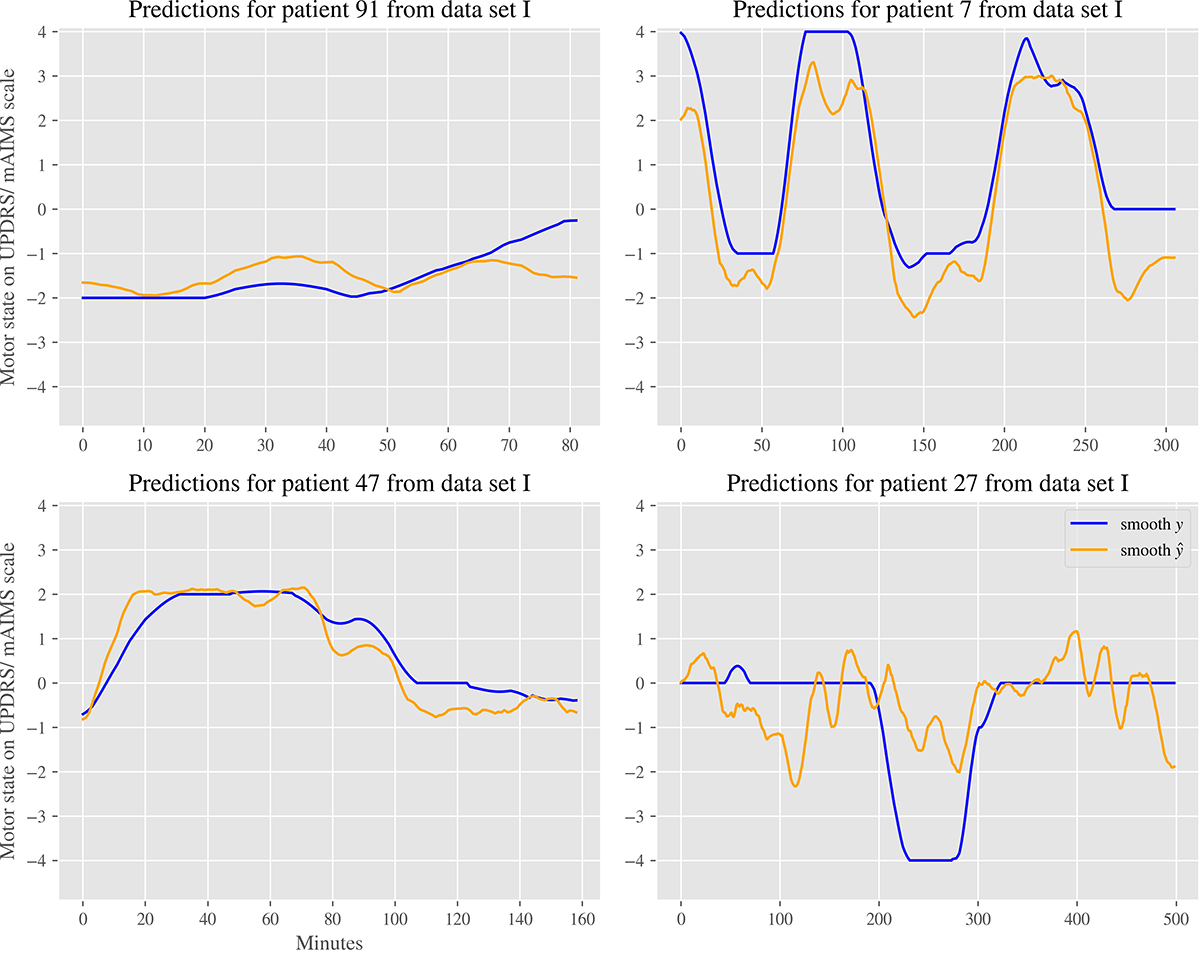Session Information
Date: Wednesday, September 25, 2019
Session Title: Phenomenology and Clinical Assessment of Movement Disorders
Session Time: 1:15pm-2:45pm
Location: Les Muses Terrace, Level 3
Objective: To explore the advancement of precision and granularity of motor state detection in persons with PD (PwP) from wrist-worn sensor data.
Background: The motor state is a highly relevant construct for the clinical decision taking in PwP: the leitmotif for all therapies is to achieve a stable ON condition, while OFF or dyskinetic motor states should be impeded. However, motor state assessment is hampered by various bias either from the expert rater or from the patient [1]. Therefore, the long-term objective assessment of the motor state is a desirable but unmet need [2]. Previously, we presented an algorithm-based approach to estimate a 3-level motor state on a one-minute scale [3]. Here we present further methodology and improved results on a more granular data base, i.e. the PD9, a nine-level motor state label.
Method: Using the data from the same cohort as described in previous publications, we compared state of the art deep learning architectures with traditional statistical as well as machine learning methods. We also applied a cost-based classification scheme to account for class imbalances and propose a smoothing method as post-processing step. We validated the model using a Leave-One-Subject-Out strategy and introduced a customized performance measure that reflects the clinical requirements to the model. We discuss the framing of the problem as a classification, regression or ordinal regression task. As a further extension of the deep learning models we applied transfer learning.
Results: Despite numerous obstacles, such as class imbalance or data paucity, we were able to achieve a clinically relevant generalizing mean absolute error of 0.77 on a metric scale from -4 to +4. For a relaxed prediction where we allow the algorithm to miss the PD9-target by one value point, we yield a relaxed accuracy of 87.0% over nine classes. We demonstrate four examples, see [Figure 1].
Conclusion: Our results indicate that deep learning techniques outperform traditional statistical and machine learning models, yielding promising model performance. Also, we show that transfer learning is a valid strategy to further boost model performance. The next step is to test the algorithmic motor state description in fresh samples, and to implement the data stream technology to make this approach feasible for large data collections.
References: 1. Colosimo C, Martínez-Martín P, Fabbrini G, Hauser RA, Merello M, Miyasaki J, et al. Task force report on scales to assess dyskinesia in Parkinson’s disease: critique and recommendations. Mov Disord. 2010;25(9):1131–42. 2. Maetzler W, Klucken J, Horne M. A clinical view on the development of technology-based tools in managing Parkinson’s disease. Mov Disord. 2016;31(9):1263–71. 3. Um TT, Pfister FMJ, Pichler DC, Endo S, Lang M, Hirche S, et al. Parkinson’s Disease Assessment from a Wrist-Worn Wearable Sensor in Free-Living Conditions: Deep Ensemble Learning and Visualization. ArXiv180802870
To cite this abstract in AMA style:
J. Goschenhofer, F. Pfister, K. Yuksel, J. Thomas, B. Fischl, A. Ceballos-Baumann, U. Fietzek. Advanced autonomous motor state detection from wrist-worn sensor in persons with PD [abstract]. Mov Disord. 2019; 34 (suppl 2). https://www.mdsabstracts.org/abstract/advanced-autonomous-motor-state-detection-from-wrist-worn-sensor-in-persons-with-pd/. Accessed January 7, 2026.« Back to 2019 International Congress
MDS Abstracts - https://www.mdsabstracts.org/abstract/advanced-autonomous-motor-state-detection-from-wrist-worn-sensor-in-persons-with-pd/

